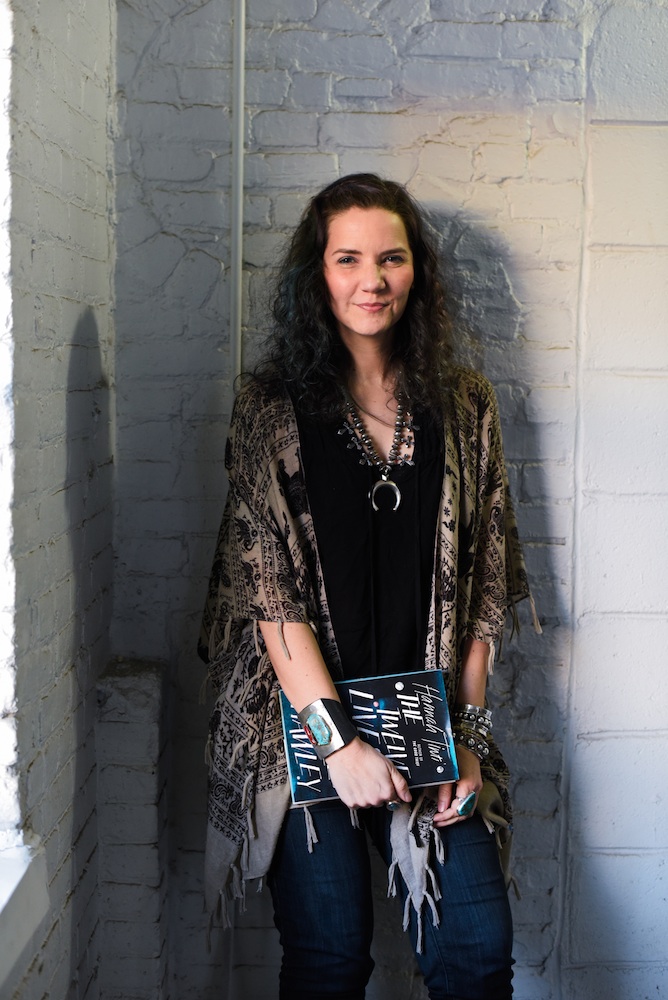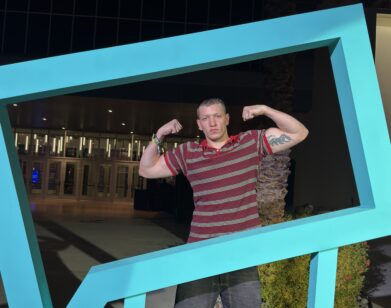Hannah Tinti’s Constellation

ABOVE: HANNAH TINTI. PHOTO COURTESY OF DANIELLE SIESS.
The term “literary thriller” is almost an oxymoron. It’s the writerly equivalent of threading a needle while riding on a rollercoaster, requiring attention to character and fine prose while hurtling from one near-disaster to another. Only a few writers can pull it off, and Hannah Tinti is one of them.
Out today, Tinti’s new novel, The Twelve Lives Of Samuel Hawley (The Dial Press), is a gripping father-daughter road trip where the bad guys are never far behind. Samuel Hawley was one of them, too, and it’s a past he has to amend for, with his fiery teenage daughter, Loo, enmeshed in the drama. Tarantino-like in its plot twists, action, and violence, the novel sweeps across the country and back and forth in time. Its structure feels as meticulously crafted as a matchstick Taj Mahal.
For those familiar with Tinti’s work, however, this is hardly a surprise. The author’s last novel, The Good Thief (2009), was a New York Times Notable Book of the Year, and a recipient of the American Library Association’s Alex Award, the Center for Fiction’s First Novel Prize, and the Quality Paperback Book Club’s New Voices Award. Tinti also co-founded the literary magazine One Story in 2002, serving as editor-in-chief for 14 years and then executive editor, and has taught creative writing at NYU and Columbia University.
JEFF VASISHTA: I read the novel thinking you must have served in the special forces. How did you get to know so much about guns and violence and injuries and how to treat them, as well as fishing and astronomy and even marine life? It felt like years’ worth of research went into writing this.
HANNAH TINTI: From start to finish, The Twelve Lives of Samuel Hawley took me seven years. Research played a big part, but I also stuffed it full of details from my own life. I grew up wanting to be Jacques Cousteau, and started off as a biology major in college. I’ve also spent a lot of time at the American Museum of Natural History. Once, I crawled inside a replica of a whale’s heart there. The guns were more difficult—I’d never shot anything bigger than a BB gun before. Luckily I have some friends who took me out to the range, so I could learn, and feel, the difference between a pistol and a revolver, a shotgun and a rifle.
VASISHTA: One of the things I found interesting was how each chapter was set somewhere new. Each new town serves as a character in the novel. When dialogue is occurring there is always a description of things going on at the same time. Was that part of the original plan?
TINTI: Once I realized the story was going to skip through Samuel Hawley’s past, I decided to set each of his chapters someplace I’ve traveled to before: Child’s Glacier in Alaska, the desert of the Four Corners, the great camps of the Adirondacks, a prairie dog reserve in Wyoming. I wanted to tip a respectful hat to American classics like On the Road, while also adding to the mythic quality of Hawley’s journey.
VASISHTA: Samuel Hawley is someone we all root for because essentially he’s a good guy. After so much killing, though, there’s a feeling of what goes around comes around—bullet number 12. What gave you the idea to structure a book around the number of times someone had been shot?
TINTI: It started when I was re-reading the myth of Hercules and his 12 labors. I was struck when I learned that he had murdered his own wife and children. He performed the 12 labors as a kind of redemption, and did terrible things to accomplish his goals. I wanted to explore this kind of tainted heroism. The number 12 also added an interesting challenge: how could I write a story where a man gets shot 12 times—and the reader knows he is going to get shot—and still keep it interesting?
VASISHTA: In some ways this novel reminded me of the movie A History Of Violence where Viggo Mortensen’s character’s troubled past comes back to haunt him. Who would you have play the main characters in the movie version of this novel?
TINTI: The book has been optioned for television and [playwright] Jez Butterworth is working on the script. No idea who will end up playing Samuel Hawley, but I always imagined someone like Anson Mount in Hell on Wheels. Loo would have to be an unknown girl who could pull off the toughness. Perhaps a younger, pre-famous Jennifer Lawrence, cutting off those hands in Winter’s Bone.
VASISHTA: You’ve crafted a no-holds-barred page-turner that also has some incredible writing and never feels like it’s racing through details to get to the next scene. Juggling the commercial and literary is never easy. How many revisions and how much editing went into crafting this? Did you have a group of close readers that you trusted for feedback?
TINTI: I share my work with two writers: Helen Ellis and Ann Napolitano. We’ve known each other a long time and tell each other the hard truth. But my day job is being an editor, so I am always looking for ways to improve the work. I’m very aware of how a reader is making their way through the story, and the revisions never stop. The goal is to make it all look effortless.
VASISHTA: The structure of the book is quite complex. There’s Hawley and Loo, the two main characters, but then there’s a host of other characters and relationships—Mabel Ridge, Marshall, Jove, Mary Titus, Principal Gunderson. How did you go about plotting this and dividing where everyone would fit in?
TINTI: In horror movies, there’s always a creepy moment where they find the lair of the serial killer. That’s pretty much how my apartment looked while I was writing this book. Scribbled notecards, cut out pictures from magazines, and string zig-zagging back and forth as I tried to keep track of the different plot lines, characters, POVs, and objects that shift back and forth through time. I wanted Hawley’s past and Loo’s present to mirror each other, so that when Hawley falls in love for the first time, so does his daughter—and when he steals a bearskin rug as a kid, it later appears on Loo’s living room floor. It was complicated making it all work together, but in the end I started to imagine these small, connecting moments as individual stars within the larger constellation of the book.
VASISHTA: Despite the success of your last novel, I’ve read that you were heartbroken, depressed, and in debt when you were trying to write this. What was going on in your life to put you in such a position? Aren’t all best-selling authors meant to be incredible happy and wealthy all the time? [laughs]
TINTI: By the time The Twelve Lives of Samuel Hawley hits, it will be nine years since I published a book. While many good things happened during that time that I’m grateful for, it wasn’t smooth sailing. I wrote 300 pages of another novel that failed and eventually got put in a drawer. Two members of my family were diagnosed with cancer, so I spent a lot of time in hospitals and giving home care. Several close friends died. I fell in love with the wrong person. And I was working all the time but still sliding into debt. My life wasn’t anything like I thought it would be. And then I got in a bad car accident. I walked away, but it was like a splash of cold water. The next day, I started writing Twelve Lives. Sometimes, when you’re backed into a corner and have nothing to lose, it’s a great place to write from.
VASISHTA: How does teaching at NYU and Columbia and editing One Story influence your own writing? How is an average day or week divided for you between writing and paying the bills?
TINTI: Like most artists, I cobble together a living by juggling several different jobs. I work on my own writing at night and on the weekends. But teaching and editing have helped me enormously, and brought wonderful people into my life. When I see an author I’m editing struggling to bring a flash of an idea to the page, or notice a student’s hands shaking as they read something they wrote out loud for the first time, it keeps things in perspective. How vulnerable we all are. How hard it can be to open the door.
THE TWELVE LIVES OF SAMUEL HAWLEY IS OUT TODAY, MARCH 28, 2017.






